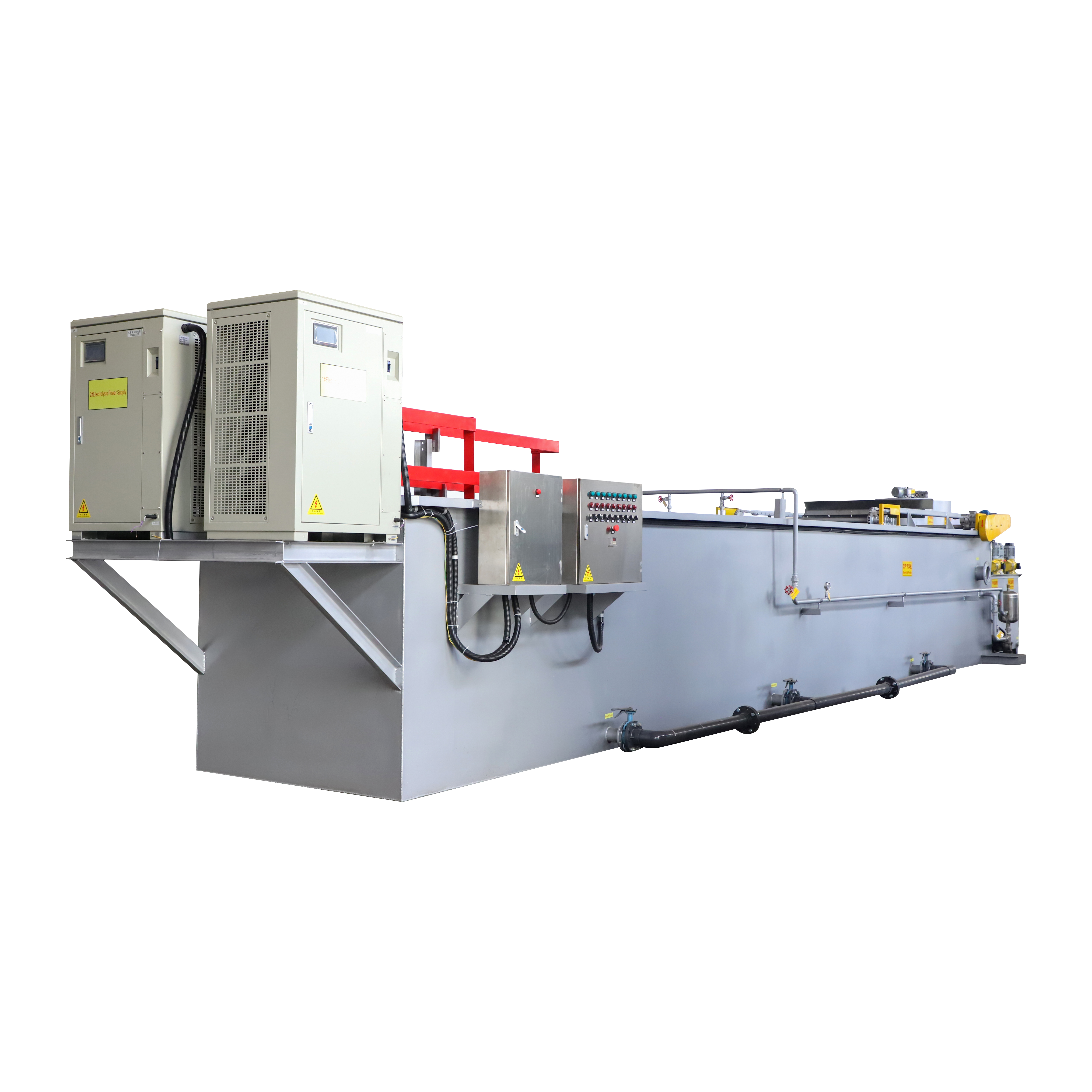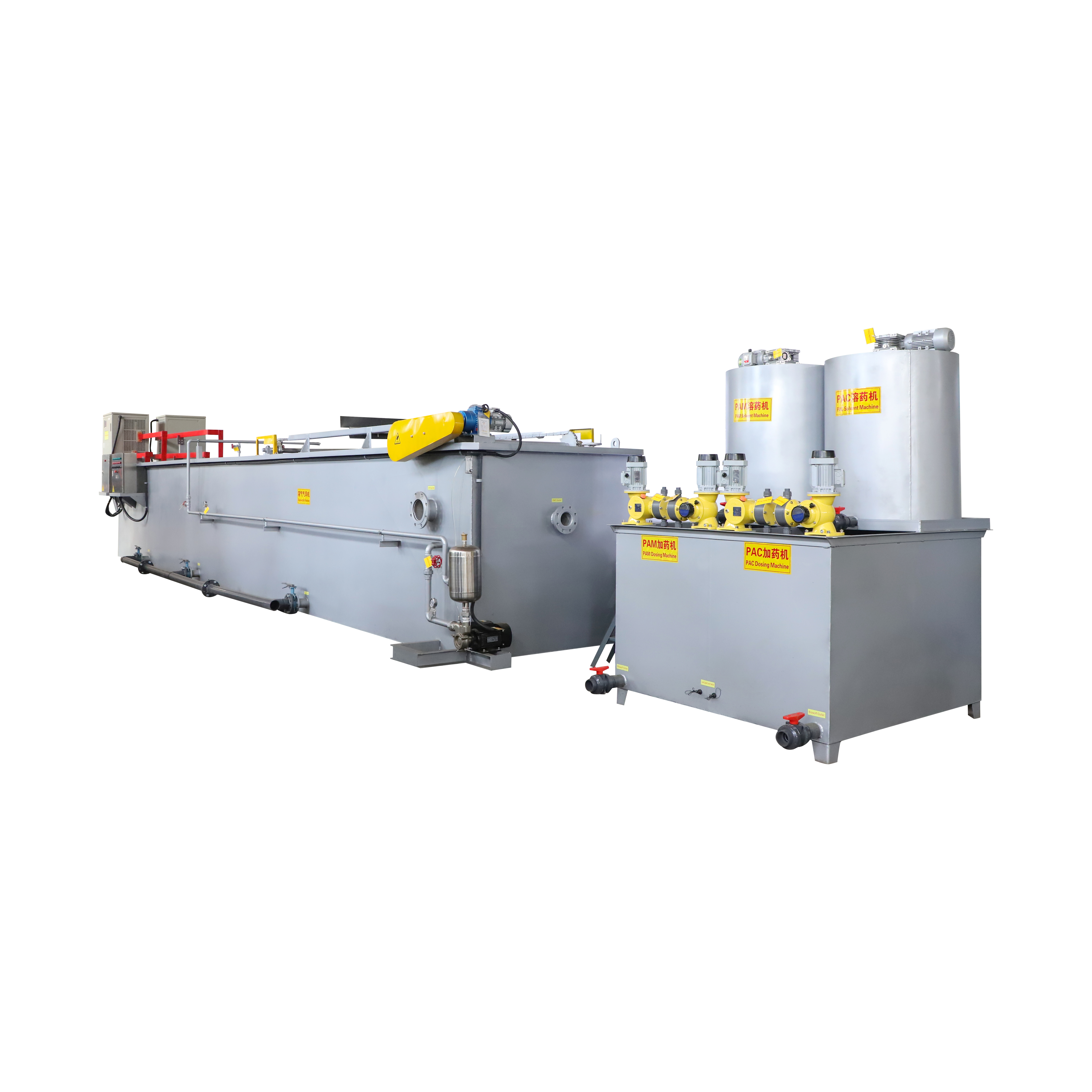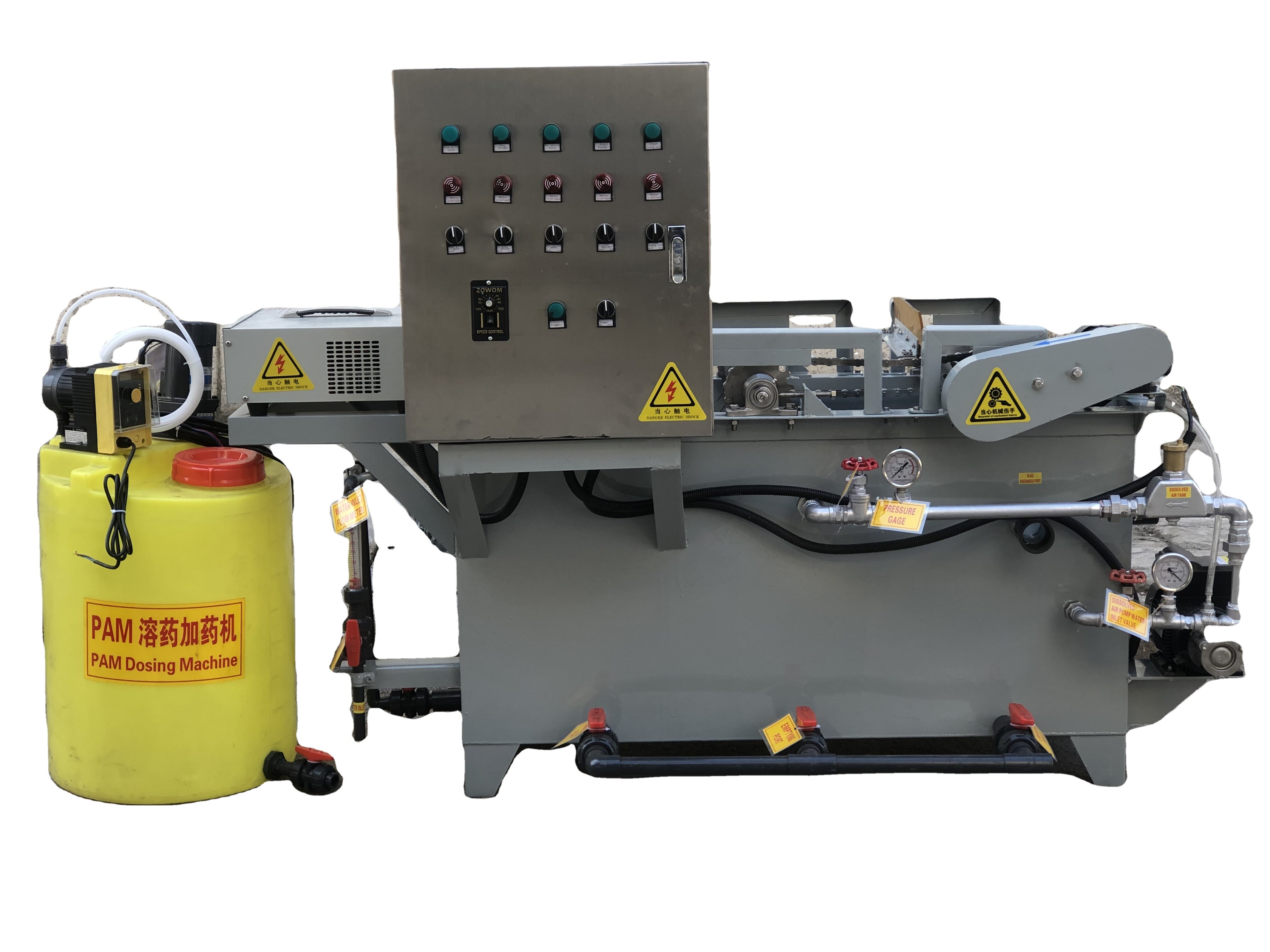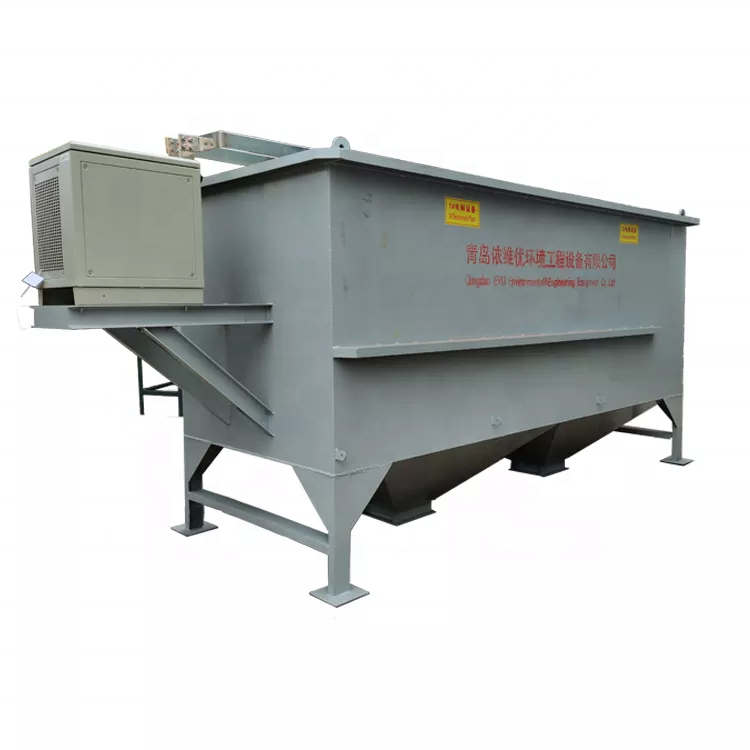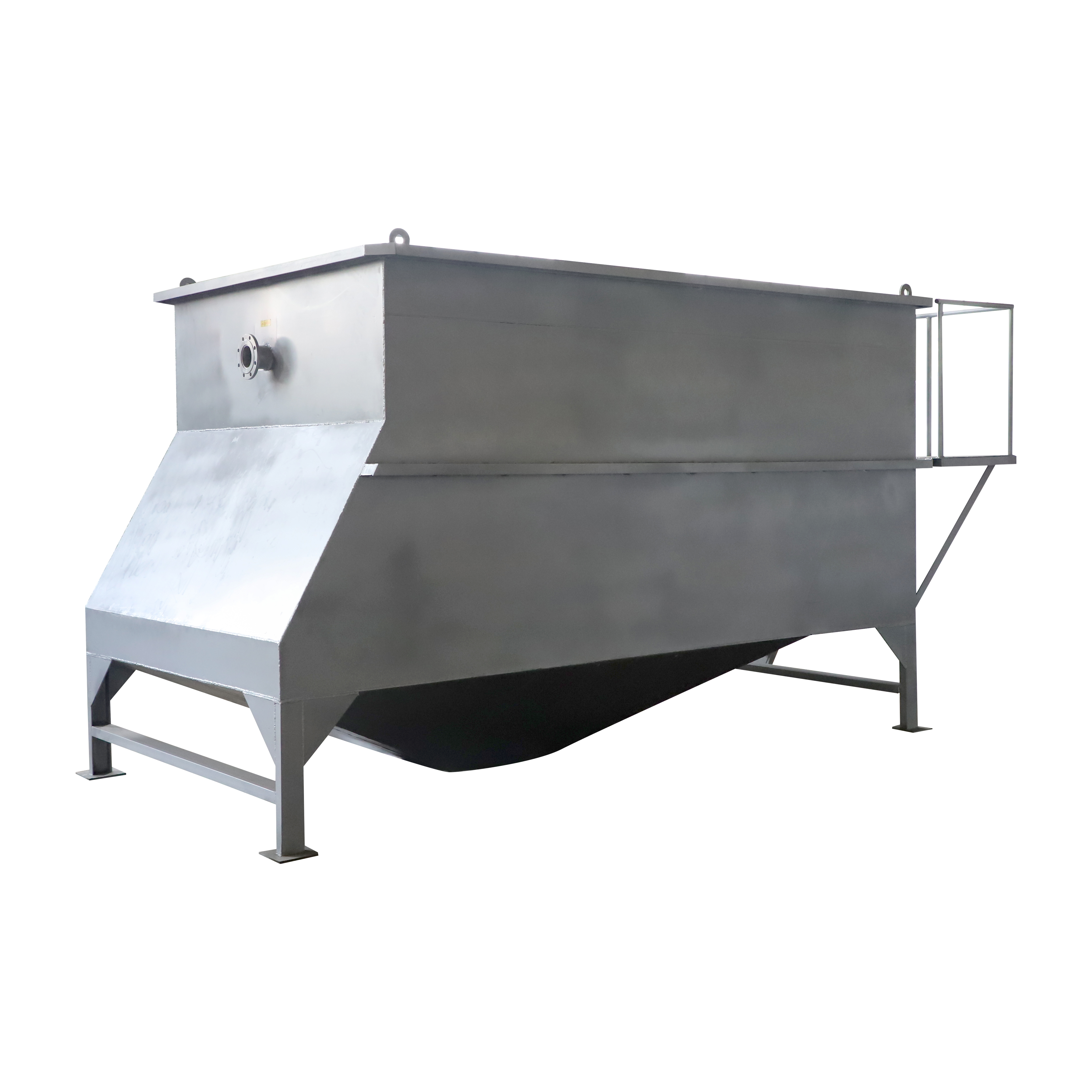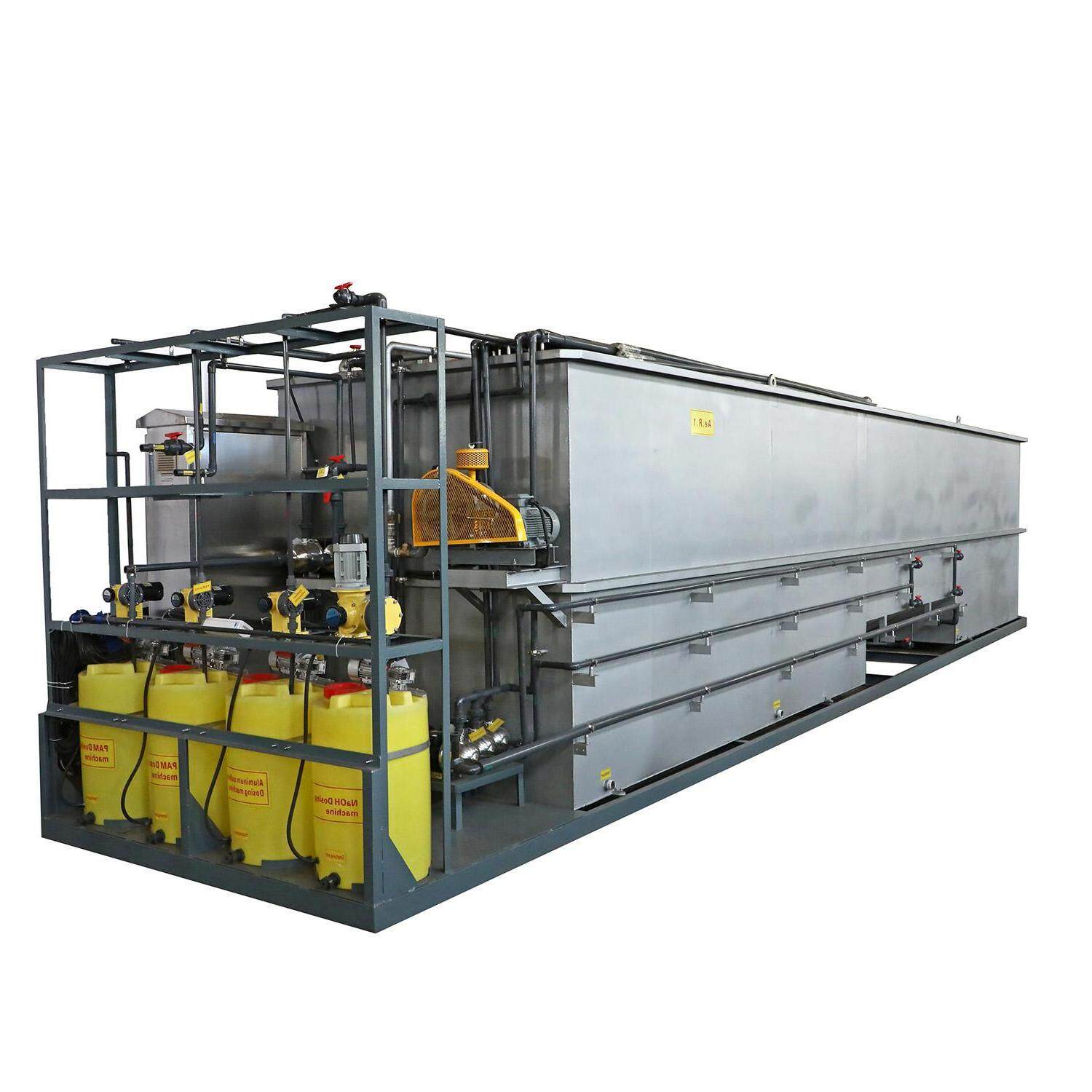Email format error
Email cannot be empty
Email already exists
6-20 characters(letters plus numbers only)
The password is inconsistent
Email format error
Email cannot be empty
Email does not exist
6-20 characters(letters plus numbers only)
The password is inconsistent

QDEVU® Electrocoagulation Dissolved Air Flotation (EC+DAF) System
Our electrocoagulation dissolved air flotation (EC+DAF) system is made from high-quality steel, ensuring a long service life. With low energy consumption, our system is both practical and economical to use. The system features a reasonable and humanized design, making it durable and aesthetically pleasing. Additionally, our automatic controlling system is equipped with a safe protector to prevent sudden accidents, making it reliable and durable.
-
Product Details
QDEVU Electrocoagulation System is a combination of Electrolysis, Flocculation and Air Flotation, which can remove COD, BOD, suspended solids, grease, turbidity, chromaticity, heavy metal ions, calcium and magnesium ions, etc. in wastewater, and improve the B/C value of biochemical treatment.When the wastewater is treated by electrolytic flocculation, it can not only coagulate and precipitate colloidal impurities and suspended impurities, but also remove a variety of pollutants in the water due to the oxidation of the anode and the reduction of the cathode.
WORKING PRINCIPLE
Electrocoagulation technology using electrochemical principle, such as aluminum, iron alloy as the main metal electrode, with the aid of function produce electrochemical reaction with high frequency dc power supply, to convert electrical energy into chemical energy, at the expense of the anode metal electrode produce metal cation flocculating agent, through condensation, in addition, reduction and oxidation decomposition of pollutants from water separation, the technique of purifying water body.
ADVANTAGES
- The Electrocoagulation System and Air Flotation System can be integrated or separated according to the water quality.
- The bipolar connection is adopted to reduce the distance between the plates, reduce the tank voltage and energy consumption, and the energy consumption per ton of water is 45%-50% lower than that of the traditional electric flocculation device. At the same time, it simplifies the operation of power connection device and plate replacement.
- Water flows from bottom to top to reduce bubble congestion and blockage.
- It is easy to combine with other methods to realize the comprehensive treatment of wastewater.
APPLICATION
Electrocoagulation can be widely used in many wastewater treatment industries. Such as electroplating wastewater, car washing wastewater, textile bleaching wastewater, paper mill wastewater, slaughtering wastewater, food and beverage factory wastewater,oil refinery wastewater, oil field wastewater, pharmaceutical wastewater, mining wastewater, waste leachate sewage, agricultural wastewater, painting and dying wastewater, pigment wastewater,sewage cooling towers wastewater, wood processing wastewater,the traveling scenic area sanitary sewage, It can also be used for sewage purification at the bottom of the ship and port catchment area.
FEATURE
EC requires simple equipment and is easy to operate with sufficient operational latitude to handle most problems encountered on running.
Wastewater treated by EC gives palatable, clear, colorless and odorless water.
Sludge formed by EC tends to be readily settable and easy to de-water, compared to conventional alum or ferric hydroxide sludges, because the mainly metallic oxides/hydroxides have no residual charge.
Flocs formed by EC are similar to chemical floc, except that EC floc tends to be much larger, contains less bound water, is acid-resistant and more stable, and therefore, can be separated faster by filtration.
EC can produce effluent with less TDS content as compared with chemical treatments, particularly if the metal ions can be precipitated as either hydroxides or carbonates (such as magnesium and calcium. EC generally has little if any impact on sodium and potassium ions in solution.
The EC process has the advantage of removing the smallest colloidal particles, because the applied electric field neutralises any residual charge, thereby facilitating the coagulation.
The EC process generally avoids excessive use of chemicals and so there is reduced requirement to neutralize excess chemicals and less possibility of secondary pollution caused by chemical substances added at high concentration as when chemical coagulation of wastewater is used.
The gas bubbles produced during electrolysis can conveniently carry the pollutant components to the top of the solution where it can be more easily concentrated, collected and removed by a motorised skimmer.
The electrolytic processes in the EC cell are controlled electrically and with no moving parts, thus requiring less maintenance.
Dosing incoming waste water with sodium hypochlorite assists reduction of biochemical oxygen demand (BOD) and consequent chemical oxygen demand (COD) although this should be avoided for wastewater containing high levels of organic compounds or dissolved ammonia (NH4+) due to formation of trihalogenated methanes (THMs) or other chlorinated organics. Sodium hypochlorite can be generated electrolytically in an E cell using platinum and similar inert electrodes or by using external electrochlorinators.
Due to the excellent EC removal of suspended solids and the simplicity of the EC operation, tests conducted for the U.S. Office of Naval Research concluded that the most promising application of EC in a membrane system was found to be as pretreatment to a multi-membrane system of UF/RO or microfiltration/reverse osmosis (MF/RO). In this function the EC provides protection of the low-pressure membrane that is more general than that provided by chemical coagulation and more effective. EC is very effective at removing a number of membrane fouling species (such as silica, alkaline earth metal hydroxides and transition group metals) as well as removing many species that chemical coagulation alone cannot remove.
CONTACT US FOR MORE DETAILS ABOUT WASTEWATER TREATMENT SOLUTION.
If you have specific requirements, contact us about our custom electrocoagulation system.


